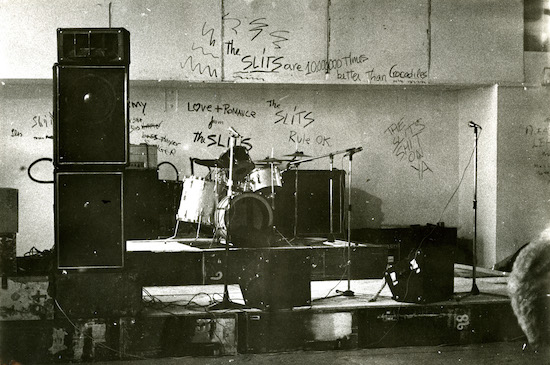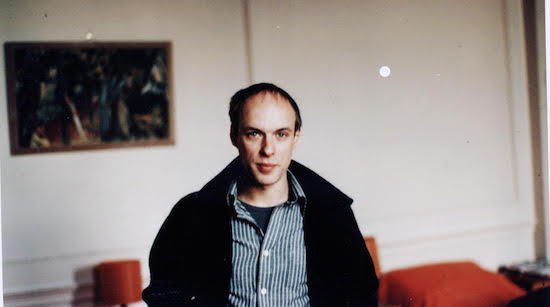Eno at Watford
Originating at Ealing (1961–64) and then Ipswich (1964–67), Roy Ascott’s Groundcourse focused on the concept of unlearning through disorientation. It aimed to challenge and confuse students, exploring the effect of human behaviour and experimenting with what Ascott called the “concept of power, the will to shape and change”. Redefining student expectations is still a concept which Ascott utilises within his art courses (now mainly based in China), stating that, “central to the first year is this behaviour, identity, environment – it is still organism that informs everything”. These are a few examples of unlearning practices previously used on the Groundcourse:
Imagine you wake up one morning to find yourself a sponge. Describe visually your adventures during the day.
Make a sculpture in plaster of interlocking units, such that when a key piece is removed, the rest falls apart.
Describe visually the movements of a hungry, caged lion; then those of a frightened squirrel.
Invent two distinctly different animals, imagine them to mate, then draw the offspring.
Students were encouraged to return towards their original personality, visually defining the process they had been through, investigating identity, the relevance of past learning, and the socialised impact of others on the creative process. As stated by art educator Kate Sloan, “Ascott’s hope was that the students would realise that self was an unlimited state; in fact, self was a process. Self as a process was subject to intervention, disruption and revolution from the wider environment that consisted of interconnected individuals”.
Here disorientation through producing creative instructions, which were completely different from traditional art pedagogy and concentrated on non-art centred processes, were utilised to support unlearning.
Originating from the ideals of the Bauhaus Vorkurs and the teaching techniques employed by Victor Pasmore and Richard Hamilton at Newcastle, Brian Eno entered straight into a radical course which realigned his expectations of what art education would entail.
”We were all very young: I was 16 when I went to art college and 16 was younger then than it is now, actually. More like a 13 or 14 year old now. So, there I was in this college imagining that I was going to be painting some Mondrian’s or Renoir’s, or things like that. We all went in with our little box of paints or whatever we had and they said, well you can put those away [laughs] and we were subjected to a series of I suppose social experiments really, that were so completely fascinating to me and very disorientating because we didn’t know why we were doing them. Nobody had thought that going to art school would be about that.”
Eno continued: the Groundcourse “was very disorientating in many ways”.
Hamilton believed in the eradication of preconceived ideas, where “art is not something which you think about, but something you feel”. But what is this thought process when his pedagogical ethos was based not on discussing or showing pictures but developing the process of helping students to think. Hamilton summarized:
”The first aim of our course is a clearing of the slate. Removing preconceptions. People come to art school with ready-made ideas of what art is. We have to do some erasure. Then we have to build up a new sense of values. We try to put across the idea that any activity should be the outcome of thinking […] What we do is to introduce problems which can be solved intellectually.”
It was from this position that Hamilton gave a sense of liberation to the ideas and beliefs based around a pop sensibility, which influenced Ascott’s course. As Michael Bracewell suggests, it allowed “an authorisation to explore the broadest possible concept of what being an artist might be”.
Ascott’s art pedagogy was focused on the discovery of an artist’s place within the world and how this manifested, with Eno confirming: “part of the deal was that you were what you believed in”.
Exploring this belief was part of the rationale behind the personality games employed on the Groundcourse. “So that was really, really interesting, this idea you are not a fixed thing, you can change things about yourself, you can see what it is like to be somebody else”. The fluidity within the individual artist was a key element of change outlined within postmodern pedagogy, where art and life were interlocked, and self was embedded in the creative process.
Reviewing the most important elements of the Groundcourse which connected directly with students, Ascott explained that
”I try to get them to understand that they aren’t who they think they are. They have been told who they are by their parents, passing O Level/A Level, this and that, so they think this is who they are and have to be. I make the point that what we are concerned with is for them to make themselves and to be what a human is: There are quite a lot of models such as the god/man one, the man alone one, evolutionary one, etc. […] so, can we think about and model these things in the way that we really understand relationships.
The participants of the Groundcourse were encouraged to explore an in-depth personal understanding and artistic flexibility. One example of using physical disorientation was highlighted by Eno regarding “a very upper middle class, very sweet, very well-mannered and timid young lady. Trish [Blott] had to walk a tightrope every morning. We were in an old Victorian school room with very high ceilings, so there was a tightrope which Trish walked across. It wasn’t very high but nonetheless this was the kind of thing that people were doing. So that was really, really interesting, this idea you are not a fixed thing, you can change things about yourself, you can see what it is like to be somebody else.”
Both of these examples show art pedagogy related to the individual and their place in the world, with Ascott continuing by stating: “we know about interdependence and interaction and so on but how could we first all embody that”. A series of games (or what could be conceived of as ‘activity maps’) connected to the philosophies embedded in new forms of conceptual art that were emerging and a concentration on the creative process, inspired by Newcastle’s fine art department.

The Slits at Hornsey, by Ana De Silva
Eno defined one of the original exercises his cohort undertook at Ipswich.
”The very first thing that we did: there were 36 of us, 18 pairs, as far as I know they were randomly chosen pairs. What you and that person had to do was to devise a game or a test or some kind of challenge everybody else would go through. They would be assessed in how they performed in that, in terms of is this person bold or timid, is this person thoughtful or impulsive, is this person extrovert or introvert.”
Personality tests were the focus of the first series of games, utilising random elements which were not necessarily explicitly explained. It was left to the participant to complete the artwork.
We made an actually rather beautiful thing; it was like a game of draughts, but they were all coloured differently. People were asked to arrange them with no instruction on how they would do it. It was interesting. Some people would arrange them so that all the light green ones went into light green slots; others did them quite randomly, others really deliberately made them so that they were as contrary as possible. So, we made various assumptions about their characters from this.
Eno explained that this exercise was a large class experiment as it occurred over many weeks and followed an in-depth exploration of personalities, followed by looking at ways of redefining them. All of the class members had to engage with the seventeen other tests which were being created within the cohort, and the instigators of each set would take notes to define elements of every participant’s personality. This meant there were now seventeen different assessments of each student’s character; having created a summary of their personality assessment, young artists were then placed within groups of up to six people to undertake the next stage of the project. Eno laughed as he explained how this next stage was the crux of the game.
We had to design exactly the opposite person and live that person for the next 10 weeks. So, in my case, I wasn’t allowed to talk unless spoken to because I was always a chatterbox. I wasn’t allowed to initiate anything; I just had to do what other people asked me to do, so I had to execute other people’s plans. I was very physically energetic, and I had to sit on a trolley so that if I wanted to go anywhere, I had to persuade someone to push me. So, for 10 weeks I was another person, and so was everybody else, and yet we were trying to do these new projects together. The meekest person had to be the leader of the group, the direct opposite.
Rearranging hierarchical expectations and reconfiguring preconceived truths based on the self was at the heart of this game creation, alongside an exploration into the socialised collaborative impact of redefining every student’s natural personality. Ascott defined the ideas that developed, through disorientated projects, as being quite radical and challenging artistic preconceptions.
They had boards which they folded in different combinations that would result in going to the next level, or not, then if you didn’t win you wore some enormous thing over your head. There were two stories that came out of it: Eno had to go around with a paper bag over his head because he couldn’t see for a period and Townsend was in a trolley for a few days. Basically, they would build quite large things that you would go into with lights, all kinds of stuff, but on quite an environmental scale. We gave them about six weeks for that.
You can imagine the scene within the art studios as the future destructive Who guitarist is pushed around by fellow students and the creator of Ambient music is quietened, redefining their natural impulses supported their development of cultural impactful work. Conceptual development through closely exploring personality interference into artistic creativity, supported a widening of some student’s minds, unpacking the creative processes of art forms.
Eno pondered the impact, saying he was a non-musician who entered the field through an alternative direction to traditional music training:
”So, I didn’t come into music from that route; I came into music from the route of thinking how do I make music happen, given that I can’t do the things that people normally do to make music happen. I very much took that notion that Roy had given, of creating scores actually. Activity maps, as it were, ways of getting to something.”
Blank Canvas: Art School Creativity From Punk to New Wave by Simon Strange is published by Intellect


